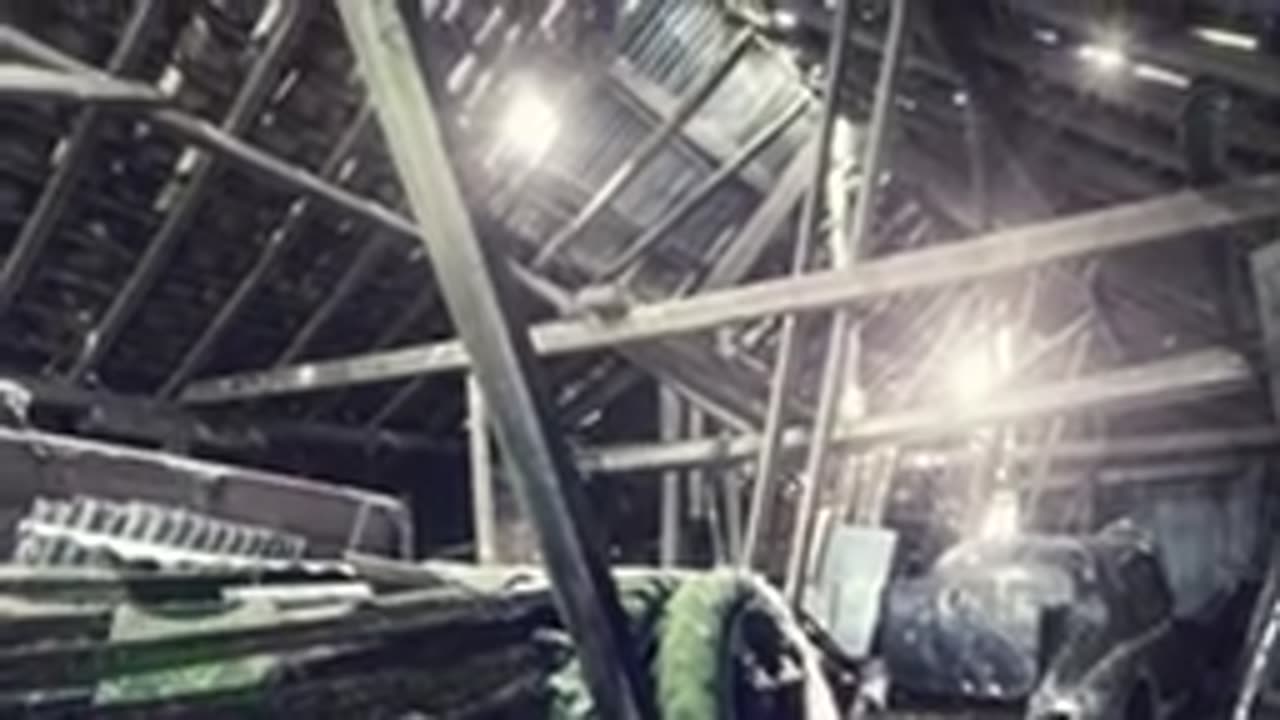Premium Only Content

Fall Protection Saves Lives! _ Training, Oregon OSHA
### **Fall Protection Saves Lives! – Oregon OSHA Training Guide**
Fall-related incidents remain one of the leading causes of workplace injuries and fatalities. **Oregon OSHA** provides guidelines and training to ensure compliance with safety standards and help protect workers from fall hazards. Here's a comprehensive training guide:
---
### **Training Objectives**
1. Understand the importance of fall protection in the workplace.
2. Recognize common fall hazards.
3. Learn about Oregon OSHA’s fall protection standards.
4. Properly use fall protection systems and equipment.
5. Implement fall prevention strategies to save lives.
---
### **1. Introduction to Fall Hazards**
- **Statistics**:
- Falls account for a significant percentage of workplace fatalities and injuries.
- Highlight local Oregon statistics for relevance.
- **Why Fall Protection Matters**:
- Protect workers from severe injuries or death.
- Reduce costs related to injuries, legal claims, and lost productivity.
---
### **2. Understanding Oregon OSHA Regulations**
- **Trigger Heights**:
- General Industry: Fall protection required at **4 feet**.
- Construction: Fall protection required at **6 feet**.
- Scaffolding: Required at **10 feet**.
- Steel Erection: Trigger height of **15 feet** for connectors.
- **Fall Protection Plan**:
- Required for construction work when fall hazards exist.
- Must include hazard identification and measures to reduce risks.
---
### **3. Identifying Common Fall Hazards**
- **Unprotected Edges and Openings**:
- Roofs, mezzanines, skylights.
- **Improper Use of Ladders**:
- Overreaching or unstable positioning.
- **Scaffolds and Platforms**:
- Lack of guardrails or secure access.
- **Slippery or Uneven Surfaces**:
- Spills, debris, or poorly maintained walkways.
---
### **4. Types of Fall Protection Systems**
1. **Guardrails**:
- Prevent falls at edges and open areas.
2. **Personal Fall Arrest Systems (PFAS)**:
- Harnesses, lanyards, and anchors.
3. **Safety Nets**:
- Used in construction for higher work areas.
4. **Positioning Systems**:
- Allows hands-free work while maintaining stability.
5. **Warning Line Systems**:
- Visual barriers for roofing and open areas.
6. **Fall Restraint Systems**:
- Prevent workers from reaching fall hazards.
---
### **5. Proper Use of Equipment**
- **Inspection**:
- Check harnesses, lanyards, and anchor points for wear and damage.
- **Fitting**:
- Ensure harnesses are snug but comfortable.
- **Anchorage**:
- Must support at least **5,000 pounds** per person attached.
- **Connection**:
- Always use compatible components for secure attachment.
- **Storage**:
- Keep equipment clean, dry, and in a safe location.
---
### **6. Developing a Fall Protection Plan**
- **Hazard Assessment**:
- Identify all potential fall hazards at the workplace.
- **Control Measures**:
- Determine the most effective fall protection systems.
- **Rescue Plan**:
- Establish procedures for prompt rescue after a fall.
- **Worker Training**:
- Regularly train employees on fall hazards and proper use of equipment.
---
### **7. Practical Training and Exercises**
- **Equipment Demonstrations**:
- Show workers how to properly wear and inspect PFAS.
- **Hands-On Practice**:
- Allow employees to practice connecting to anchor points and using restraint systems.
- **Scenario-Based Training**:
- Roleplay hazard scenarios, such as working near unprotected edges.
---
### **8. Recordkeeping and Documentation**
- Maintain records of:
- Fall protection training sessions.
- Equipment inspections and certifications.
- Fall incident investigations and corrective actions.
---
### **9. Resources for Employers and Workers**
- **Oregon OSHA Training Materials**:
- Access free online resources, handouts, and videos.
- **Consultation Services**:
- Request on-site visits from Oregon OSHA safety consultants.
- **Additional Tools**:
- Posters, checklists, and templates for fall protection plans.
---
### **10. Final Assessment and Certification**
- **Quiz or Practical Evaluation**:
- Test workers’ understanding of fall hazards and protective measures.
- **Certificate of Completion**:
- Provide documentation for compliance and training records.
---
### **Key Message**
**"Falls are 100% preventable with proper training, planning, and equipment. Fall protection saves lives!"**
Would you like a printable handout, presentation, or additional resources tailored for your team?
-
 2:11:11
2:11:11
TheSaltyCracker
4 hours agoTrump Fires Everyone ReeEEeE Stream 01-31-25
115K224 -
 1:15:45
1:15:45
Roseanne Barr
6 hours ago $18.45 earnedJFK case solved!? with Shane Stevens | The Roseanne Barr Podcast #85
60.6K41 -
 10:36:04
10:36:04
Dr Disrespect
12 hours ago🔴LIVE - DR DISRESPECT - PUBG - WHAT WINNING LOOKS LIKE
225K36 -
 4:41:07
4:41:07
Nerdrotic
8 hours ago $28.17 earnedCap 4 and Emelia Perez BACKLASH! Acolyte is Still CANCELED! Hollywood STFU | Friday Night Tights 339
169K27 -
 57:41
57:41
The StoneZONE with Roger Stone
5 hours agoWhy Are They So Afraid of Tulsi Gabbard? | The StoneZONE w/ Roger Stone
34K7 -
 LIVE
LIVE
I_Came_With_Fire_Podcast
10 hours ago🔥🔥Suing CHINA, Hillary AIDED RUSSIA, and DEI REMOVED from Military🔥🔥
1,210 watching -
 LIVE
LIVE
SoniCentric
11 hours agoCozy Up With SNOWY Lakeside Cabin Jazz Vibes
121 watching -
 1:36:16
1:36:16
PMG
1 day ago $0.27 earnedSPECIAL: JUSTICE FOR JEREMY - NOW!
12.7K3 -
 1:01:01
1:01:01
TheTapeLibrary
13 hours ago $2.09 earnedThe Horrifying True Story of Summerwind Mansion
26.3K4 -
 29:28
29:28
Afshin Rattansi's Going Underground
1 day agoMax Blumenthal on US’ Ukraine Aid Corruption, 'Psychotic' Israel Turning the West Bank into Gaza
34.3K4